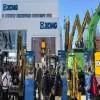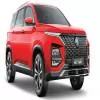With a focus on blending seamless functionality with value-driven design, he envisions creating environments that redefine benchmarks for quality healing facilities and positively impact its surrounding communities.
CW DesignBuild spoke to Ravideep Singh about his vision, design philosophy and experience in working across global borders.
What is your vision for Creative Designer Architects?
My vision for CDA is to position the organisation at the forefront of research, innovation and practice in healthcare design enabling equitable, salutogenic and resilient built environments that are engineered to thrive.
Tell us about the major difference in design ideology and techniques in India vs USA?
From a design ideology perspective, I believe that the western design fraternity embodies a relatively greater degree of cognisance for human centrism in design, the quest to innovate and a research-driven workflow. Broadly speaking, the acknowledgement and prevalence of these aspects are still in their nascent stages in India. From a healthcare design standpoint, the lacuna is even more comprehensive with several initiatives and organisations both in public and private domain such as CHD (The Centre for Health Design) and others which are focussed on stimulating healthcare design ideologies and are backed by research and evidence to achieve measurable positive effects on its end-users.
While there are other significant differences in material, techniques, and workflows — most of these aspects are perhaps a rationale of the socio-economic diversity between the AEC industry in India and the United States. However, it would be fair to say that Indian architects today have devised indigenous methods and technologies and optimised workflows to resonate with global design standards. However, there is still a lot of work to do.
What are the key challenges in designing healthcare spaces?
As healthcare designers at CDA, our focus lies in catering to the most sensitive and vulnerable end-users — patients. Patients are typically under stress due to many causes such as anxiety of treatment, loss of privacy, environmentally induced stress; they are immunosuppressed and seek physical and psychological support. This support comes in part through the medical treatments and the caregivers. In contrast, the other significant part comes through an altruistic and salutogenic environment that comforts the patients, their loved ones and the caregivers. Another challenge we mitigate through our design is nosocomial infections. The risk of acquiring infections in a hospital is higher than in any other building type. Hence ensuring high levels of infection control in hospitals is highly critical.
Hospitals are also one of the most rapidly evolving building types susceptible to technological mutations and changing spatial needs. The instance of hospitals inability to flex their beds during the pandemic is a prime example of a much-needed resilience that healthcare facilities necessitate globally.
Tell us more about the use of the latest technology softwares in your projects and how have they aided your work?
At CDA, we employ technology across all the crucial areas of our workflow, i.e., prototyping and design to simulation and visualisation. Integrating technology in the design phase allows us to reinforce conceptual exploration and devise quantifiable data to steer the most efficient strategies through simulation of sun paths, wind flow, lighting, energy use, occupancy, etc.
We use tools such as Dynamo for Revit for prototyping, Sefira, Energy Plus for energy simulation and Diva, Ladybug and HoneyBee, among others, to enable various categories of simulations.
Advancements in design visualisation, collaboration and communication is another area where technology is leading the way. The advent of real-time rendering engines, VR and AR has unleashed previously unheard possibilities of visualising and communicating designs with the various project stakeholders during all design stages. Currently, we are working with Enscape for Revit along with Digital Twin. It is also interesting to note how innovative VR platforms such as ‘Fuzor’ now allow us to inspect detailed BIM information across stakeholders in real-time virtually.
How has your design philosophy changed over time, especially in the light of the pandemic? What changes have you made in your work protocol due to the pandemic?
I would say that my design philosophy has evolved and broadened rather than being entirely changed. The innate ethos that drives healthcare design, in general, already encapsulates many crucial aspects prevalent in today’s AEC discourse, such as environmental sustainability, cost-effective construction and operation, the emphasis on occupant health and well-being, LCA etc. While some of these aspects, such as sustainability, were at the forefront of the project's pre-pandemic, others such as the emphasis on health, LCA, flexibility and resilience were considered less crucial. The pandemic has undoubtedly compelled us to re-evaluate this order of significance, and we have begun to observe occupant health, building’s life cycle energy and cost, potential scenarios of flexibility to reprogram based on evolving needs etc., as equally important considerations while designing healthcare facilities.
How do you approach design to accommodate aesthetic and functionality in commercial projects?
At CDA, we have reached a stage where design decisions are made solely based on how various aspects and systems work rather than how they look. Even for the aspects whose function is purely aesthetic, we rely heavily on neuroscience and evidence of how it would engage and interact with the user’s psyche. We believe such perspectives allow for better and more effective decision-making and ensure a robust user experience. This approach often crosses paths with the notion of phenomenology in architecture which also works with innate human senses.
How do you incorporate sustainability in your work?
Today, integration of sustainability into the AEC workflow has become a norm; we at CDA strive to realise sustainability in our projects beyond achieving a mere certification. We begin by stratifying sustainability into various segments such as social, economic and environmental, and subsequently calibrate a project’s decisions at each stage against these three core brackets of sustainability. For instance, during the design stage, we begin with broad level energy simulation with ‘Sefiara’ to conceive an energy-efficient building envelope while simultaneously conducting a programmatic evaluation to ensure the proposed building harmoniously blends in with the context both physically as well as functionally; and potentially gives back to its immediate context and the environment by incorporating programs that yield revenue while promoting community integration and congregation etc.
How would you define your style of design? How do you ensure that your projects bear your signature?
I would define my approach towards design as more idiosyncratic to the specifics of a particular program, context, and the end-users. The visibility of the inherent approach and ideology is intended to be more innate, experiential, and functionally responsive than visual. In order to ensure compliance with these fundamentals, we strive to curate concepts that are pivotal to these principles. Along with carefully sketching the project delivery roadmap and realizing which sort evaluates the efficacy of the conceptual intents, we ensure conceptual compliance and meaningfulness.
What changes have you perceived in your clients (in terms of demands, awareness, aesthetics, etc.)?
The phenomenon of globalisation has completely transformed the awareness that clients previously possessed. With seamless digital and physical access to designs and practices across the globe, clients today are positioned much better than ever before. This has also allowed clients to understand design intent and ideologies based on evidence and case studies. Most clients are now supportive of designers’ initiatives towards sustainability and wellness.
Tell us about the projects you are working on currently.
We have some exciting healthcare projects on board, both in the public and the private domain. The Nanavati Hospital, Mumbai is a very strategically phased 0.8 million sq ft expansion of the heritage hospital at Mumbai. Another interesting project is AIIMS, Guwahati. A 1.5 million sq ft health campus in Guwahati is designed around principles of patient experience and healing architecture. The Paras Hospital at Kanpur is a 0.5 million sq ft adaptive reuse project designed to transform a dilapidated structure into a responsive healthcare environment with over 400 beds.
What advice would you like to give to aspiring architects/designers?
It might be too early for me, but my only recommendation is to look for some meaningful distinction in our work domain. Always look at the larger picture in terms of the positive impacts it could bestow— be it related to the environment, human health or community welfare.


















